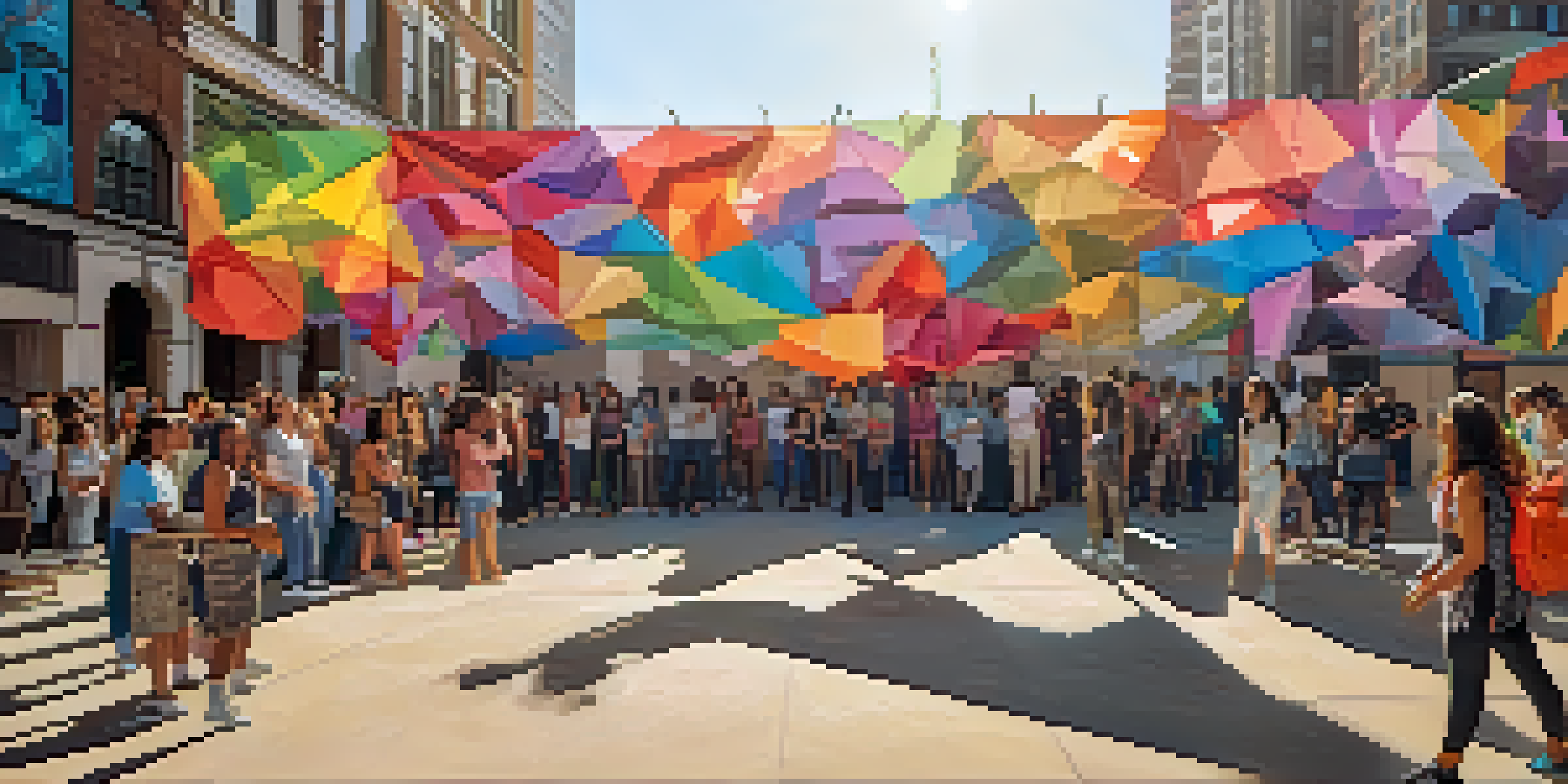Art Installations as a Medium for Political Expression in India

The Intersection of Art and Politics in India
Art and politics have long been intertwined in India, with artists often reflecting societal issues through their work. This relationship has grown increasingly complex as political tensions rise, making art a vital medium for voicing dissent and advocating change. In this vibrant landscape, installations have emerged as a powerful form of expression, transcending traditional boundaries and engaging the public directly.
Cultural Context: The Role of Art in Indian Society
In India, art is deeply rooted in culture and tradition, serving not just as decoration but as a means of storytelling. From ancient sculptures to modern installations, artists have always played a role in shaping social narratives. This cultural backdrop provides a fertile ground for political commentary, reflecting the struggles and aspirations of the people.
Art Reflects India's Political Climate
Art in India serves as a vital medium for expressing dissent and advocating change amid rising political tensions.
Notable Art Installations That Sparked Political Discourse
Several art installations have made headlines for their bold political statements. For instance, the installation 'The Unbearable Being of Lightness' by Subodh Gupta tackles issues of migration and identity, resonating deeply with India's diverse population. Such works not only provoke thought but also ignite discussions around pressing political issues, inviting viewers to engage actively.
Art Installations as a Response to Social Injustice
Many artists utilize installations to address social injustices that plague Indian society. Works like 'The Red Line' by Gitanjali Rao confront issues such as gender inequality and caste discrimination. By bringing these issues to the forefront, artists challenge audiences to reflect on their own beliefs and consider the broader implications of societal norms.
Interactive Installations Engage Public
Interactive art installations invite audience participation, fostering dialogue and deeper engagement with political issues.
Engaging the Public: The Impact of Interactive Installations
Interactive art installations have redefined the way audiences engage with political themes. By inviting participation, these installations create a sense of ownership and investment in the issues presented. For example, installations that encourage viewers to contribute their thoughts or experiences foster a dialogue that extends beyond the gallery walls.
The Role of Digital Media in Amplifying Political Art
In today's digital age, social media plays a crucial role in disseminating political art. Artists use platforms like Instagram and Twitter to share their installations, reaching wider audiences and sparking global conversations. This ability to amplify voices and messages is transforming how political art is perceived and appreciated, making it more accessible than ever.
Digital Media Amplifies Political Art
Social media platforms enable artists to reach wider audiences, transforming the perception and accessibility of political art.
Challenges Faced by Political Artists in India
Despite the powerful role of art in political expression, artists in India often face significant challenges. Censorship and political backlash can stifle creativity and limit the freedom to express dissent. Many artists navigate this precarious landscape, balancing their desire to communicate urgent messages with the risks that come with challenging the status quo.
The Future of Political Art Installations in India
As societal challenges evolve, so too will the forms of political expression through art. Emerging trends indicate a growing interest in sustainability and social justice, suggesting that future installations will continue to seek relevance. With a new generation of artists ready to take the reins, the future of political art in India is poised to be both dynamic and impactful.